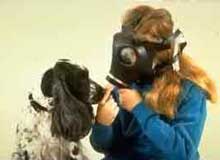
Dental disease is one of the most common problems affecting pets today, with four out of every five dogs and cats over the age of three years affected, the problem worsening with age.
In humans, tartar builds up if we do not remove it by brushing. Likewise in animals, tartar builds up if it is not removed by chewing or by brushing.
Bad breath isn’t normal, it’s a sign of dental disease. Don’t let it affect your pet’s health, or your relationship with your pet.
Why does my pet have bad breath?
When tartar is not removed it develops into calculus, which is the visible hard, yellowy, mineral buildup. Then the gums recede from around the teeth, and other supporting structures for the teeth are weakened, leading to tooth infections and tooth loss. This process is called periodontal disease and is the cause of your pet’s bad breath.
What are other signs of dental disease?
Other signs of dental disease include:
- reddened, inflamed gums
- discoloured teeth
- tooth loss
- difficulty eating
- drooling
- blood in the saliva
- weight loss
- swelling below one eye (tooth abscess)
Is it true that smaller dogs have a higher risk of dental disease?
Yes, smaller breeds, such as Poodles, Maltese Terriers and Chihuahuas, have more problems with dental disease than larger breeds. Also pets with short noses such as Pugs, Cavalier King Charles Spaniels, the Pekinese and similar breeds are more prone to tooth decay because they have too many teeth for the amount of room in their small jaws.
For the same reason, Persian cats have more dental problems and the Abyssinian is also prone to dental disease.
Can dental disease affect my pet’s health?
Yes! Apart from tooth problems, periodontal disease also affects general health. Bacteria are released into the bloodstream through the inflamed gums and can lodge in places like the kidneys and heartvalves, causing problems in these sites. Therefore, mouth health is important for your pet’s overall health and longevity.
When should my pet have a dental checkup?
Keep an eye (or nose) on your pet’s mouth regularly and contact your vet if you notice any changes. It’s hard to see into your pet’s mouth, especially if it’s sore, so your vet is the best person for a closer inspection. Often a sedative or anaesthetic is needed for a thorough examination.
An annual dental checkup is recommended so your vet can catch any problems early and to prevent bacteria and poisons from dental infections spreading to the heart, liver and kidneys through the bloodstream.
Checking your pet’s teeth will be part of his or her annual health check. An anaesthetic for further examination, X-rays, dental scaling or tooth repair/extraction may then be required.
When is dental scaling necessary?
Once calculus is present, it usually needs to be removed by ultrasonic scaling. The instruments used are the same as used for humans, and also clean below the gum margin where plaque also accumulates. Loose or infected teeth need to be extracted. Then the teeth are polished to smooth the surface of the teeth to discourage plaque formation.
This procedure needs to be performed under a general anaesthetic. Anaesthetics can be worrying for owners, but with newer and safer anaesthetic drugs, and better ways of monitoring animals under anaesthesia, there is minimal risk. Pre-anaesthetic blood tests, which check levels of liver and kidney enzymes and measure red and white blood cell parameters, are recommended for all animals regardless of age.
One the teeth are cleaned the you can help prevent or minimise the build-up of plaque and calculus again by daily brushing at home and feeding a dental diet as advised by your vet.
Can I really brush my pet’s teeth?
Yes, you should brush your pet’s teeth! There are flavoured toothpastes containing enzymes that help break down plaque and kill bacteria, although the mechanical removal of tartar is the aim. Do not use human toothpastes, as these are not designed to be swallowed and can irritate the stomach if ingested.
There are also various gels and liquids that contain the same sort of ingredients, and are an alternative if your pet disagrees with having its teeth brushed! Again, it is much easier to train your dog or cat to allow toothbrushing from an early age. You only need to clean the outside surface of the teeth, concentrating on the gum margin.
What about diet?
Dry food is better than tinned food for tooth health, but won’t completely clean the teeth. However, new ‘dental’ diets are available that have a specially designed kibble that helps clean the tooth surface as the animal eats and are clinically proven to reduce plaque build-up. Ask your vet for more information.
Can I feed my pet bones?
Most dogs and cats over a few years of age have some degree of periodontal disease, due to not enough chewing and abrasive action of hard foods. If feeding your pet bones, they should always be raw to avoid splintering, and soft – the most common cause of broken teeth is chewing on hard bones!
Other problems bones cause are gastric intolerances (diarrhoea), constipation (too many bones), choking, gastrointestinal obstruction and perforation, as well as rectal trauma. Alternatives include rawhide chews, pigs’ ears and similar chew treats, or even the humble carrot.
However, daily toothbrushing is the safest and most effective method of home dental care.
By Provet Resident Vet
Contributor: Dr Julia Adams BVSc
Last updated on 20 May 2021